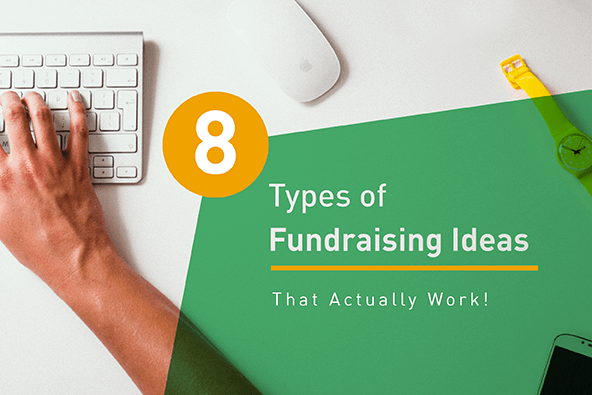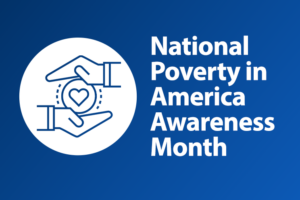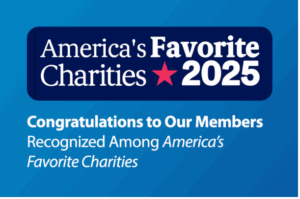Adam Weinger, President of Double the Donation | November 28, 2016
8 Types of Fundraising Ideas (That Actually Work!)
Both nonprofits and corporations alike can have trouble figuring out creative ways to raise funds that actually motivate supporters to give. And, it can be difficult trying to find an engaging way to fundraise that shows donors why it’s so important to give.
Luckily, we’ve compiled a list of fundraising ideas that can help you do just that.
In order to help both nonprofits and corporations, we’ve divided the article into two parts. The first section covers fundraising ideas for corporations, and the second section does the same for nonprofits.
Here’s what we’ll cover:
Fundraising Ideas for Corporations
Fundraising Ideas for Nonprofits
Fundraising Ideas for Corporations
Nonprofits aren’t the only ones looking for ways to fundraise. If your corporation is looking for creative ways to raise funds for your chosen organizations, we’ve got four options for you:
Let’s get started!
1. Matching gift programs

Many companies make use of matching gifts as a way for individuals to make a bigger impact with their contributions. When an employer matches gifts, that means that every time an employee makes a contribution to an eligible nonprofit, the company will match the donation, doubling the amount given.
Usually, the matching ratio is 1:1, but some companies match gifts at an even higher ratio. The choice is entirely up to your company.
Matching gifts are a win-win-win situation for everyone involved! Here’s how:
- Nonprofits benefit because they receive twice as many donations as they normally would.
- Companies benefit by giving to a cause their employees are passionate about.
- Employees benefit because they can contribute to their nonprofit of choice in a bigger way without having to give two donations.
If you want your matching gift program to be successful, you first need to create an easy process for donors to submit matching gift requests and make sure your employees are familiar with the process.
One of the most common reasons why employees don’t make use of this incentive is because they don’t know it exists.
The bottom line: A matching gift program is a simple way to support nonprofit organizations and encourage your employees to give, no matter the donation size.
Download the free Definitive Matching Gifts Guide for Employers here.
2. Dollars for doers

Dollars for Doers programs, also known as matching time or dollar for hour, encourage employees to donate their time to nonprofits. If the employee volunteers a consistent amount of hours to a single nonprofit, their company will give the nonprofit a grant for the hours worked.
This can be a great motivator for employees that don’t have the financial means to give to a nonprofit or who want to contribute in a different way.
The guidelines for the program depend on the company. For example, ExxonMobil gives $500 to a nonprofit for every 20 hours volunteered. How you decide to lay out the rules for your program will just depend on your needs.
With this program, employees have more incentive to volunteer because their contribution will add up to more than just time. Employees can use the skills they already have to give back to the community, knowing that their work will be supported with a monetary contribution as well.
If you want employees to make use of this program, it’s up to you to let them know it exists. Promote your program on social media and on your corporate philanthropy webpage.
The bottom line: Starting a Dollars for Doers program is another way to increase the impact your company has on nonprofits. You get to diversify the way your employees (and your company, by extension) contribute, blending valuable volunteer hours with the necessary funding.
3. Employee product donations.

Employee product donations are exactly what they sound like! Some companies offer discounts on company products if the employee buys the item so that it can be donated to a nonprofit.
These programs are often found in tech companies, but this model can work in any industry as long as you sell items to consumers.
For example, if your company sells backpacks, you can give employees discounts on the price if they donate items to K-12 schools. That way, your employees can support local organizations with gifts in kind.
This kind of program encourages donors to give gifts in-kind to the nonprofits in need without having to pay full price for the items they donate.
How you set up the guidelines for your program is up to you. Your company can have restrictions on the type of nonprofits your employees can donate items to. Additionally, you can include limits on the number of items they can purchase at a discounted price.
The bottom line: Sometimes employees want to give more than just money; the employee product donations program allows employees to provide gifts in-kind to nonprofits. That way, they can show loyalty to their company and the nonprofit they want to contribute to.
4. Annual grant stipends

Basically, annual grant stipends are designated funds that are given to employees so that they can donate to the nonprofit of their choice.
If you’re considering creating an annual grant stipend program, there are a few things you should consider:
- How much will each employee receive? The amount you give each employee will depend on the size of your company. Evaluate your other programs to help you see what can fit in your annual stipend budget.
- Are there any restrictions on where employees can donate their gifts? Do employees have to give the entire amount to one organization? Can they pick any organization? These are questions you’ll want to have figured out before you launch your program.
- Is there a timeline to use the grant? Will your employees get the grant at the beginning of the year and have until the end of the year to use it? Determining these guidelines will help make the program more clear to your employees.
The bottom line: Annual grant stipends show that you’re serious about corporate philanthropy. And, it gives donors an incentive to give because they don’t have to contribute their own funds.
Fundraising Ideas for Nonprofits
Sometimes, your nonprofit needs a little help coming up with creative ways to raise funds. That’s why we’ve come up with four fundraising ideas that are perfectly suited for nonprofits:
While this article offers actionable advice about all four of these fundraising ideas, they are just a small selection of the many strategies your nonprofit can use to raise funds. Looking for more inspiration? Check out this helpful resource from Double the Donation.
1. Peer-to-peer fundraising campaigns

Peer-to-peer fundraising puts fundraising in the hands of your supporters. Participants use their passion and interest in your cause to encourage their friends and family to contribute.
What makes peer-to-peer fundraising so great? Let’s take a look at a few reasons:
- Leverages your supporters’ relationships. You can use the bonds that supporters have already established with their friends and family to help reach new donors that you might otherwise never have encountered.
- Engages donors through digital channels. Peer-to-peer fundraising can aid in the promotion of your online and mobile giving channels since most of the fundraising takes place on an online fundraising platform.
- Strengthens the bond with your existing supporters. When donors share their passions with others, they’ll remember why contributing to your nonprofit is so important to them.
After your nonprofit establishes a goal, participants will create fundraising pages and set up their own goals. Each supporter can post videos, images, and a story of why they support your nonprofit. Those unique pages will be the driving force that convinces their loved ones to give.
If you’re looking for other strategies to run a successful peer-to-peer fundraising campaign, take a look at these suggestions:
- Use fundraising thermometers to visually represent your goals.
- Regularly share your progress on social media, email, or text messages to keep your fundraisers up-to-date.
- Post success stories to help motivated fundraisers reach their goals.
- Create a competition to motivate your supporters and encourage interactions.
The bottom line: If you’re looking for a fun way to engage your supporters and raise money, then a peer-to-peer fundraising campaign is a perfect choice.
2. Auctions

Auctions are great because you can incorporate them into any fundraising event as an additional way to raise funds.
Before you start planning your auction, you’ll need to decide what type of auction want. Do you want a silent auction, a live auction, or a combination of both? Maybe, you want to host part of it online!
There’s no wrong answer. The choice will all depend on your target audience and the type of event you want to host.
Although, if this is your first auction, a silent auction may be the best choice. You won’t have to worry about hiring an auctioneer or finding big-ticket items. You can include a few dozen items and plan your auction accordingly.
If you do decide to go with a silent auction, you’ll need software to accept mobile bids. Mobile bidding software will let your donors easily see what items are up for auction and allow them to place bids.
Having mobile access to your bidding platform lets donors easily participate during the entire event.
In addition to a mobile bidding platform, you’ll need to collect items for your auction. Usually, unique experiences or one-of-a-kind items get the most attention. To find items, reach out to all your contacts and local businesses.
Once you’ve got your items and your auction is planned, don’t forget to promote your event to get supporters excited for the event.
The bottom line: Auctions offer your donors a fun way to give and can be paired with most events to increase your total fundraising potential.
3. Walkathons

A walkathon is a great option for your more active donors These types of events work well because you can raise money through your online registration portal (accepting walkers’ entrance fees) and with nonprofit merchandise.
Walkathons provide donors with a healthy option to support your cause. Plus, they usually take place within a community, which means you can involve local businesses and supporters.
One of the more inexpensive fundraising events, it’s no surprise that walkathons can be a realistic option for small and large nonprofits alike!
One of the most important parts of a walkathon is deciding on the route. To help you plan, we’ll go over three different kinds of routes you can use:
- Circuit routes follow a loop. Your supporters can follow the route multiple times if they want.
- Straight routes start in one location and have a finish line in another location. Straight routes take a little more effort because they require you to have a starting point and an ending space. Since there’s an ending, participants can only complete the route once.
- Virtual routes let participants from anywhere join in at any time. Donors usually download an app to track their routes.
Once you’ve figured out the route, you can find a location to host your event (if it’s not virtual) and figure out all the resources you’ll need.
Aside from your route, you’ll need to have:
- Traffic control and medical services to keep your donors safe. If your route is on public streets, you’ll need a permit to host your event and redirect traffic.
- Stations where participants can get water, snacks, and fans.
- Signs or have volunteers hand out maps so that participants don’t get lost.
And, remember have fun! Plan a celebration at the end where you congratulate your supporters with food and awards.
The bottom line: Walkathons can help boost awareness of your nonprofit’s cause while getting the whole community involved.
4. Annual Fundraising Events

What better way to raise funds than having a celebration? That’s the goal of any annual fundraising event, whether it’s a gala, themed party, or talent show.
There are so many options you can choose from when it comes to creating an annual event! You’ll have the opportunity to get to meet your supporters face to face.
How do you decide on what event to host? Well, that depends on the kind of supporters you’re trying to reach. For instance, you might want to host a gala if you’re trying to secure large donations from your major gift donors.
Looking for more fundraising event ideas? Let’s cover some examples. Your nonprofit could host a:
- Golf tournament,
- Award ceremony,
- Charity dinner,
- Benefit concert,
- And so much more.
Your nonprofit can raise funds from your annual by selling tickets. The price of a ticket will depend on the event and the number of resources it took to plan it. However, you can also include other fundraising strategies like auctions or raffles (see above) as incentives for supporters to contribute more.
If you’re looking to plan a fundraising event, take a look at these steps to create the perfect event:
- Determine the type of event you want to host.
- Set a budget.
- Promote your event across multiple channels.
- Practice a run-through before the big day.
- Engage with donors throughout the event.
- Follow-up soon after.
The bottom line: There are so many ways you can host a fundraising event. Get creative with your events. And, remember to have fun!
Fundraising doesn’t have to be difficult. In fact, with the right idea, you can reach your goals and have fun at the same time!
If you’re curious about more ways to raise funds, here are more resources for your nonprofit or corporation.

Get Resources and Insights Straight To Your Inbox
Explore More Articles
Congratulations to Our Members Recognized Among America’s Favorite Charities
Each year, The Chronicle of Philanthropy releases its list of America’s Favorite Charities—the 100 nonprofits that raise the most from individual donors, foundations, and corporate…
Read ArticleGet Resources and Insights Straight To Your Inbox
Receive our monthly/bi-monthly newsletter filled with information about causes, nonprofit impact, and topics important for corporate social responsibility and employee engagement professionals, including disaster response, workplace giving, matching gifts, employee assistance funds, volunteering, scholarship award program management, grantmaking, and other philanthropic initiatives.




